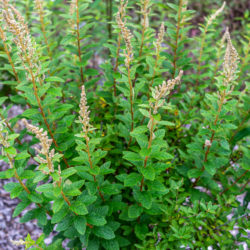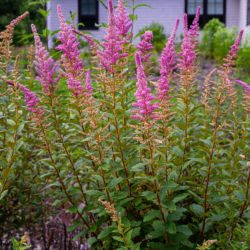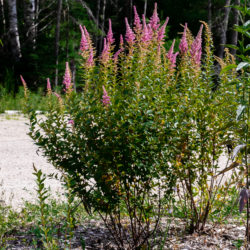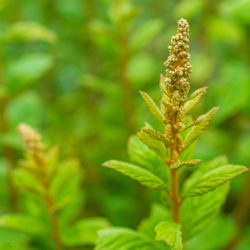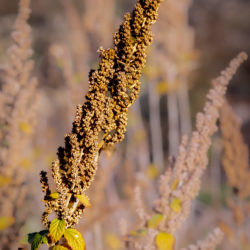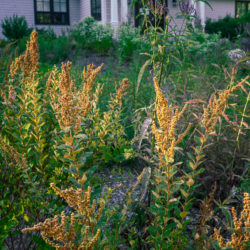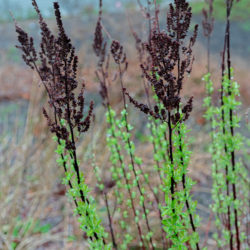Etymology
Spiraea is Greek for wreath, referring to the showy flowers of many species in this genus; tomentosa is Latin for ‘covered in hairs,’ referring to the underside of the leaves.
Native Habitat
Wet meadows, bogs, and moist, full sun, moderately acidic soils.
Garden Uses
Excellent choice in rain gardens, pond edges, and low, wet areas, as well as sunny, mixed borders and naturalized wet areas. Faded flowers can be cut to promote prolonged re-bloom. Flower heads remain attractive throughout the winter, and does tend to reseed. Will re-sprout readily from the base after winter damage or pruning.
Overview
This plant is a perennial, deciduous shrub that forms thickets of multiple, unbranched stems reaching up to about 4 feet in height. Similar in appearance to an invasive Asian species, (S. japonica), which has flat flower clusters and smooth leaves. The native Spirea alba with foliage of similar appearance, does not have leaves with tomentose (downy) undersides. The common names of this species refer to the flower shape (steeplebush), and the tough stem (hardhack).
Leaves and Stems
Leaves are simple, alternate, elliptical or ovoid, coarsely toothed and approximately 3 inches long with dense yellowish-brown hairs on their under-surface (tomentum). Summer foliage is pale to medium green, and turns yellow in autumn. Stems are woody. First year stems are hairy. Bark is thin, exfoliating, smooth and orange to reddish-brown.
Flowers
Showy, densely-packed flowers in erect, terminal, steeple-shaped clusters, are 4 - 8 inches long and pink to rosy-purple. Each individual flower is 5-petaled, 1/4 inch across, and has numerous long link stamens.
Fruit/Seed
The brown seed capsule is a cluster of 5 tiny pods, each with a single seed that remain in the capsule throughout the winter.
Animal Associates
Attracts birds and butterflies, and is a larval host to the Columbia silk moth (Hyalophora columbia).
Propagation
Spreads by suckers to form colonies. Can be propagated either from seed or softwood cuttings with no special treatment. Self-seeds in the Native Garden.
Ethnobotanical Uses
Steeplebush has no known edible uses. Some native Americans used an infusion of leaves and stems as a medicinal tea to treat dysentery, relieve sickness in pregnancy and ease pain during childbirth.
Garden Location
Library Garden (see garden map)
Anecdotal Information
This plant is considered invasive in Europe and Scandinavia.
Sources
Lady Bird Johnson Wildflower Center
University of Maine Cooperative Extension
Plant Profile by Kate O'Dell

